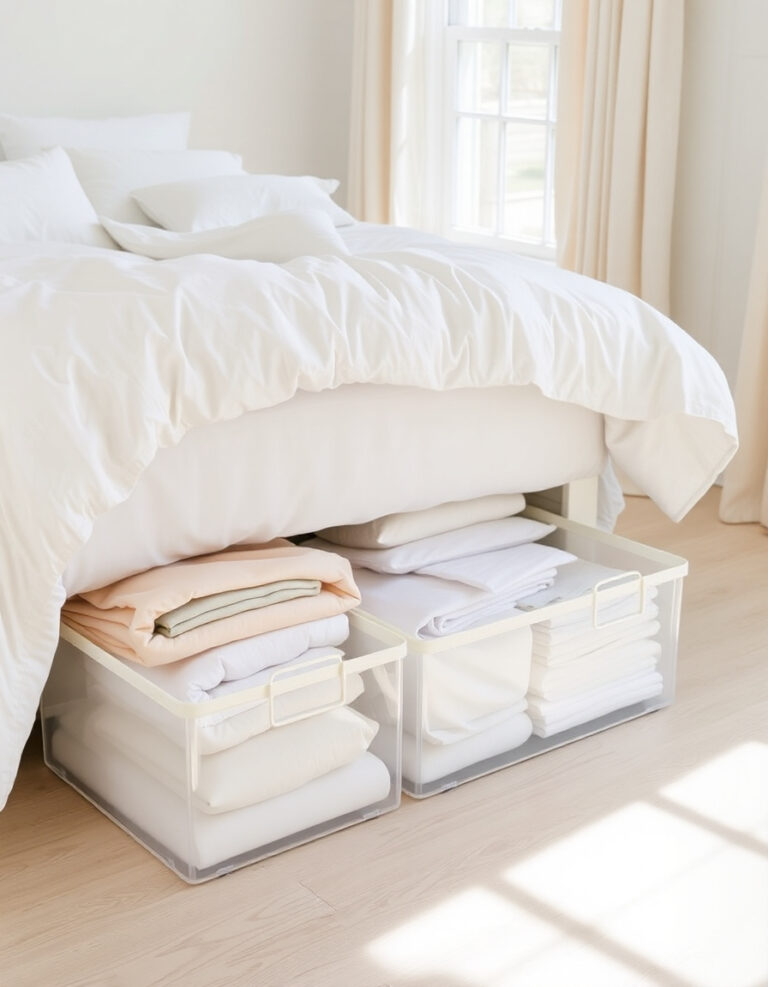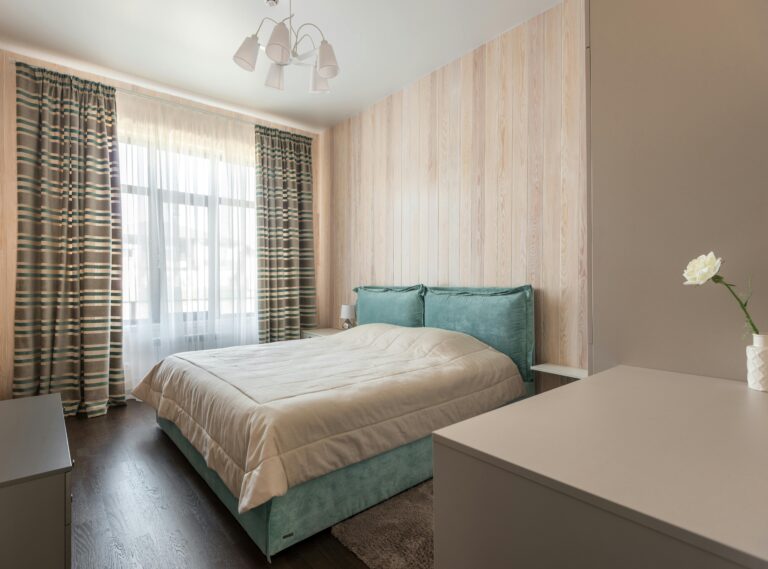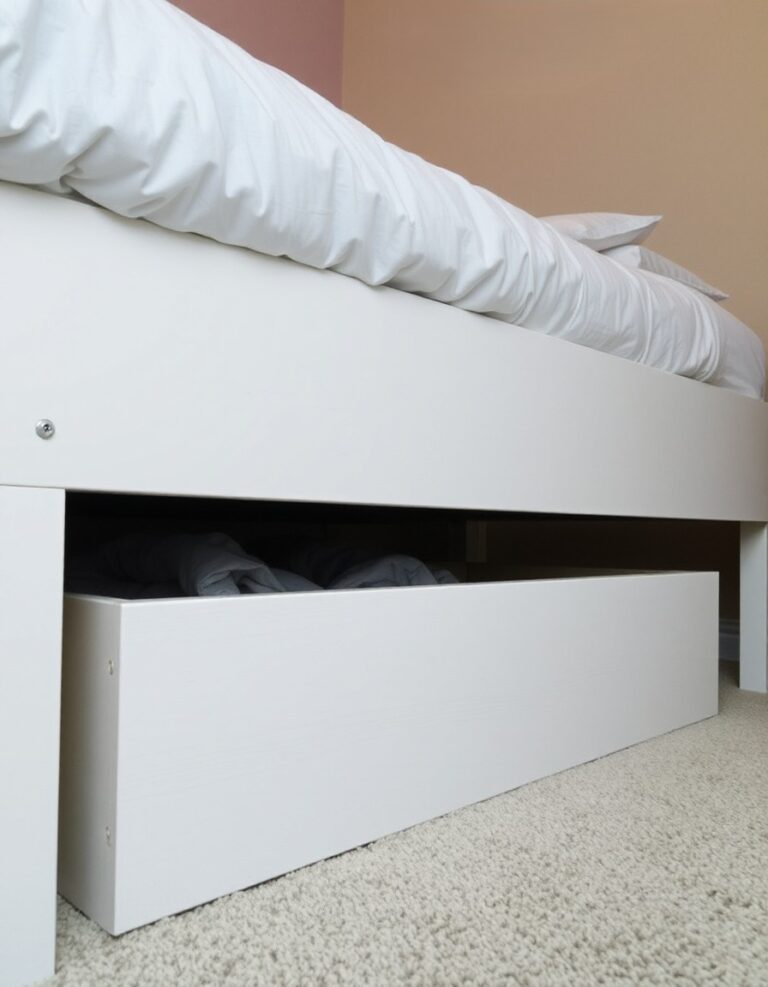Narrow bedrooms present unique design challenges that many homeowners face, but with the right strategies, you can transform these spaces into comfortable, well-proportioned retreats. Learning how to visually balance a narrow bedroom is essential for creating a harmonious space that feels both functional and inviting. Whether you’re dealing with a cramped city apartment or a converted room with challenging dimensions, these proven techniques will help you maximize your space’s potential.
Understanding the Challenges of Narrow Bedroom Spaces
Long, narrow bedrooms often feel like hallways rather than restful sleeping spaces. The main issues include poor traffic flow, difficulty placing furniture, and an overall sense of imbalance. These spaces can feel claustrophobic and uninviting when not properly designed. However, with strategic planning and smart decorating choices, you can create the illusion of width while maintaining functionality.
The key to success lies in understanding how the human eye perceives space and using design principles to manipulate these perceptions. By implementing specific narrow bedroom layout ideas, you can create a more balanced and welcoming environment.
Strategic Furniture Placement for Long Narrow Rooms
Creating Zones Within Your Space
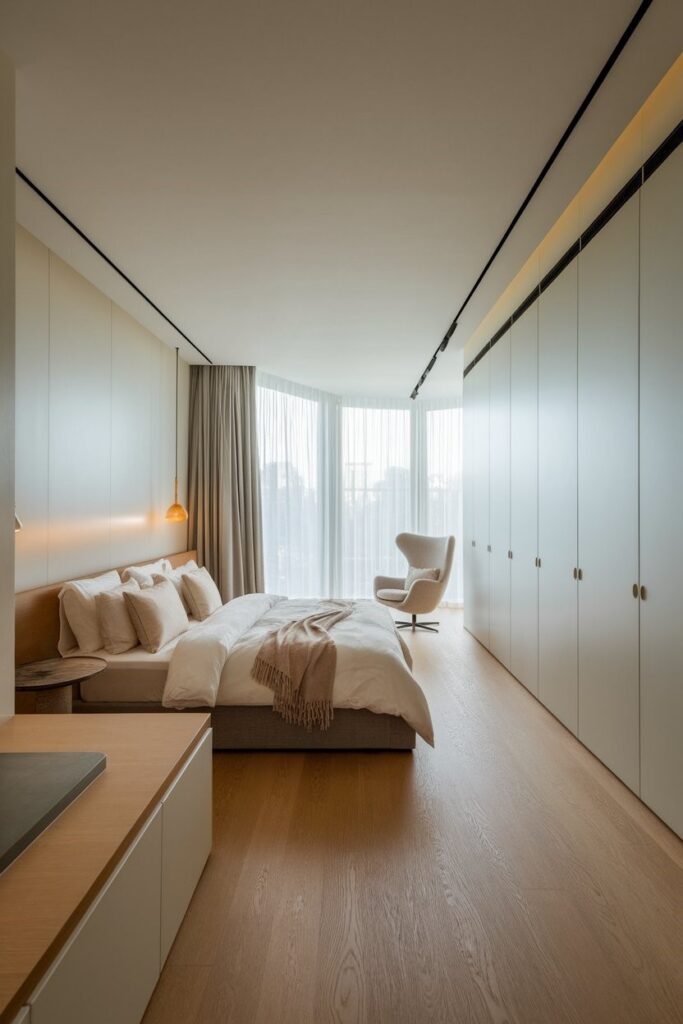
How to arrange furniture in a narrow bedroom starts with creating distinct zones rather than pushing everything against the walls. Divide your room into functional areas such as sleeping, dressing, and relaxation zones. This approach prevents the tunnel effect that often plagues narrow spaces.
Consider placing your bed at an angle rather than parallel to the longest wall. This unconventional placement can break up the linear feel and create more visual interest. If space allows, position a small seating area or reading nook at one end of the room to establish a secondary focal point.
Furniture Scale and Proportion
Choose furniture that fits the scale of your room rather than overwhelming it. In narrow bedrooms, several smaller pieces often work better than one large statement piece. Instead of a bulky dresser, consider a tall, narrow chest of drawers that draws the eye upward.
Platform beds or beds with built-in storage can be excellent choices for these spaces. They provide necessary functionality without adding visual weight. When selecting nightstands, opt for pieces with legs or open shelving to maintain an airy feel.
Color and Pattern Strategies to Expand Visual Space
Light Colors and Their Impact
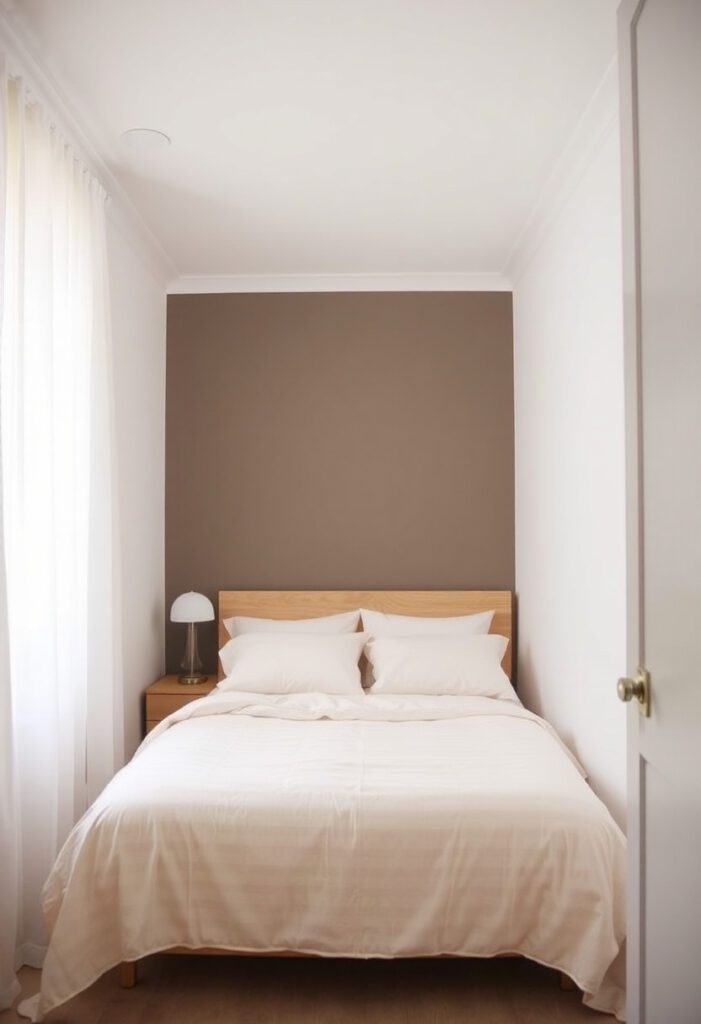
Light, neutral colors are your best friend when decorating a long narrow bedroom. Whites, soft grays, and pale pastels reflect light and create the illusion of expanded space. Paint the shorter walls in a slightly darker shade than the longer walls to visually pull them closer together, creating better proportions.
Consider using a monochromatic color scheme with varying shades of the same color. This creates depth without overwhelming the space with too many competing elements.
Strategic Pattern Use
Horizontal stripes on the shorter walls can make your room appear wider, while vertical stripes on the longer walls can balance the height. However, use patterns sparingly to avoid visual chaos. A single accent wall with subtle horizontal stripes or geometric patterns can be more effective than multiple patterned elements.
Avoid large, bold patterns that can make the space feel smaller. Instead, opt for small-scale patterns or subtle textures that add interest without overwhelming the narrow dimensions.
Lighting Solutions for Narrow Bedroom Visual Balance
Layered Lighting Approach
Proper lighting is crucial for how to make a narrow room feel wider. Implement a layered lighting strategy that includes ambient, task, and accent lighting. Avoid relying solely on overhead fixtures, which can emphasize the room’s narrow proportions.
Wall sconces mounted at different heights can create vertical interest and free up valuable floor space. Consider installing LED strip lights under floating shelves or behind the headboard to create a subtle glow that visually expands the walls.
Natural Light Optimization
Maximize natural light whenever possible by keeping window treatments minimal and light-colored. If privacy is a concern, consider sheer curtains or blinds that can be adjusted throughout the day. Mirrors strategically placed opposite windows can double the amount of natural light and create the illusion of additional space.
How to Visually Balance a Narrow Bedroom with Mirrors and Reflective Surfaces
Strategic Mirror Placement
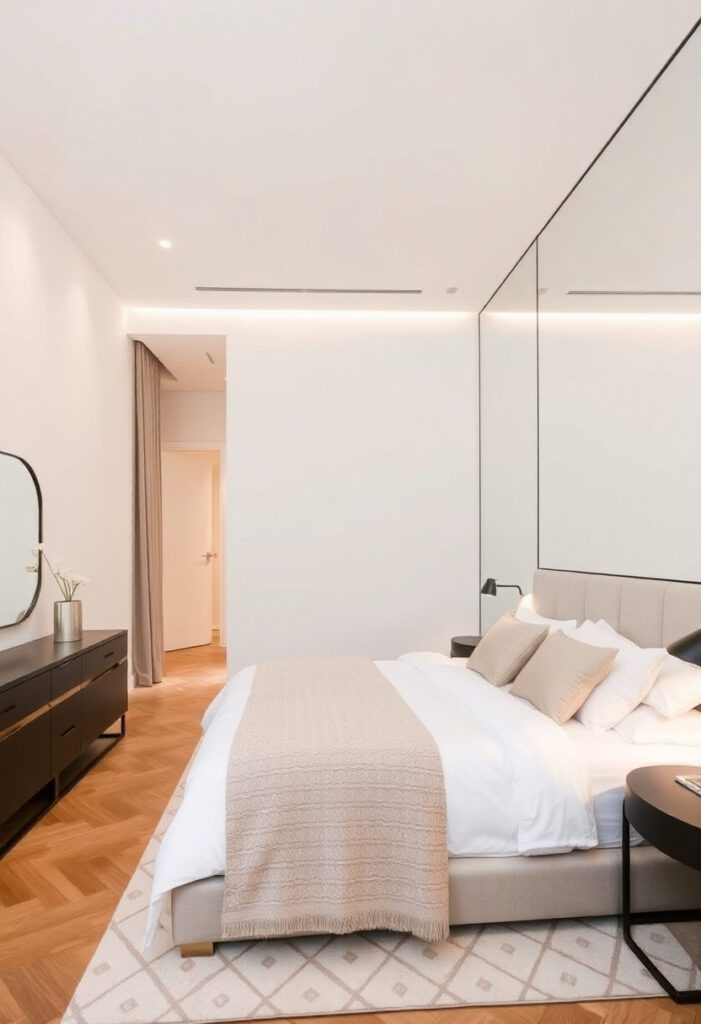
Mirrors are among the most effective narrow bedroom decorating tricks for creating the illusion of width. Place a large mirror on one of the longer walls to reflect the opposite wall and create depth. Alternatively, a series of smaller mirrors can create visual interest while serving the same space-expanding purpose.
Avoid placing mirrors directly opposite each other, as this can create an uncomfortable infinite reflection effect. Instead, position them to reflect windows or other light sources to maximize their space-enhancing benefits.
Reflective Surfaces and Materials
Incorporate reflective surfaces beyond traditional mirrors. Glossy finishes on furniture, metallic accents, and even glossy paint can help bounce light around the room and create a more open feel. Glass furniture pieces, such as acrylic nightstands or glass-topped tables, maintain visual lightness while providing necessary functionality.
Storage Solutions That Enhance Visual Balance
Vertical Storage Strategies
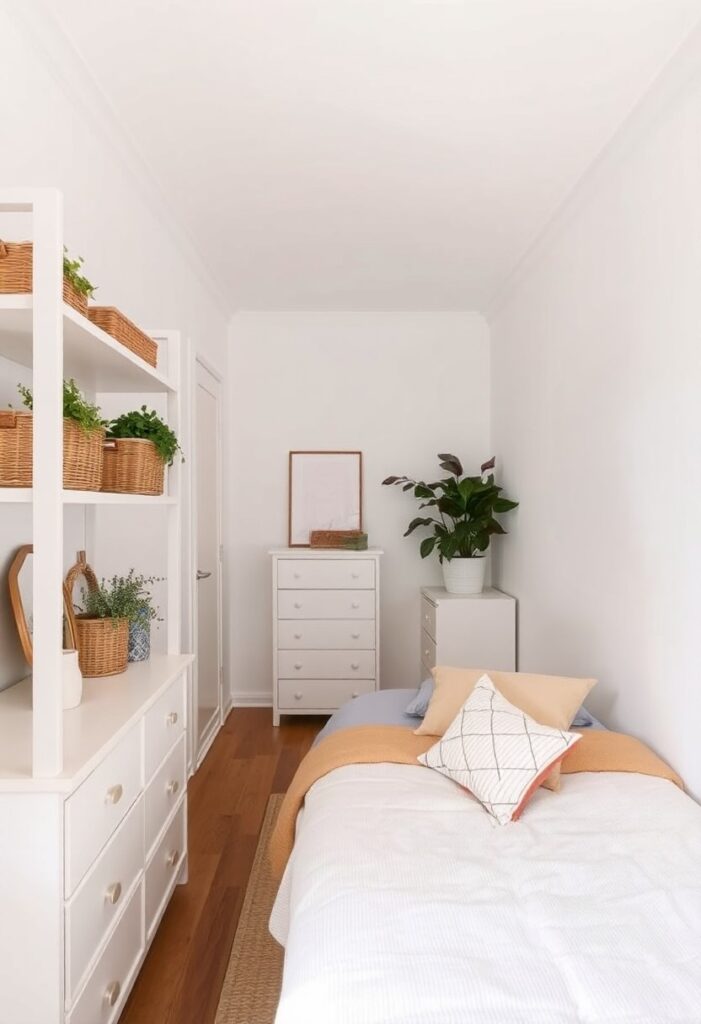
Long bedroom design tips often emphasize the importance of vertical storage to keep floor space clear and draw the eye upward. Install floating shelves along the walls to display books, or plants. This approach adds personality while maintaining the room’s open feel.
Consider a tall, narrow bookshelf or shelving unit that extends from floor to ceiling. This creates vertical lines that can help balance the room’s horizontal emphasis.
Hidden Storage Options
Built-in storage solutions are ideal for bedroom layout for long narrow rooms because they don’t protrude into the limited floor space. Under-bed storage boxes, ottoman storage benches, and beds with built-in drawers can hide clutter while maintaining clean lines.
Wall-mounted storage systems can be customized to fit your specific needs without taking up valuable floor space. These systems can include everything from clothing storage to desk areas for small home offices.
Window Treatment Considerations
Maximizing Width with Curtains
Hang curtains wider than your actual window frame to create the illusion of larger windows and more wall space. Mount curtain rods close to the ceiling rather than just above the window frame to draw the eye upward and create the impression of taller walls.
Choose light, flowing fabrics that don’t overwhelm the space. Heavy, dark curtains can make a narrow room feel even more cramped and uninviting.
Alternative Window Treatments
Roman shades or blinds can be excellent alternatives to traditional curtains in narrow bedrooms. These treatments take up minimal space while providing privacy and light control. Choose treatments in light colors that complement your overall color scheme to maintain visual continuity.
How to Visually Balance a Narrow Bedroom with Floor Treatments and Their Impact
Flooring Direction and Pattern
The direction of your flooring can significantly impact how to visually balance a narrow bedroom. If you have hardwood floors or are installing new flooring, consider running the planks perpendicular to the longest walls. This creates horizontal lines that can make the room appear wider.
Area rugs can also help define spaces and add warmth to narrow bedrooms. Choose rugs that are proportionate to your furniture groupings rather than trying to cover the entire floor.
Creating Visual Continuity
Maintain consistent flooring throughout the space to create an unbroken visual flow. If you must use different materials, ensure they complement each other in color and texture. This continuity helps prevent the space from feeling chopped up or disjointed.
Conclusion
Mastering how to visually balance a narrow bedroom requires a combination of strategic planning, creative problem-solving, and attention to detail. By implementing these small bedroom visual balance techniques, you can transform your challenging space into a comfortable and well-proportioned retreat.
Remember that the key to success lies in creating visual interest while maintaining functionality. Focus on light colors, strategic furniture placement, effective lighting, and clever storage solutions to maximize your space’s potential. With patience and creativity, your narrow bedroom can become a perfectly balanced and inviting space that serves all your needs.
For more bedroom ideas, see 18 Elegant White Bedroom Ideas for a Bright and Airy Look.
Frequently Asked Questions
Q: What’s the best way to arrange furniture in a very narrow bedroom?
A: Create zones by placing your bed at an angle or against the shorter wall, use vertical storage solutions, and choose furniture with legs or open designs to maintain visual lightness. Avoid pushing all furniture against the walls, which can create a tunnel effect.
Q: Should I use dark colors in a narrow bedroom?
A: Generally, light colors work best for narrow bedrooms as they reflect light and create the illusion of more space. However, you can use darker colors strategically on shorter walls to visually pull them closer and create better proportions.
Q: How many mirrors should I use in a narrow bedroom?
A: One large mirror on a longer wall or a series of 2-3 smaller mirrors can effectively expand the space. Avoid over-mirroring, which can create a disorienting effect. Place mirrors where they’ll reflect light sources or windows for maximum impact.
Q: What type of lighting works best in long, narrow bedrooms?
A: Use layered lighting with a combination of ambient, task, and accent lighting. Wall sconces, pendant lights, and LED strip lighting work well as they don’t take up floor space. Avoid relying solely on overhead fixtures that can emphasize the room’s narrow proportions.
Q: Can I use patterns in a narrow bedroom?
A: Yes, but use them strategically. Horizontal stripes on shorter walls can make the room appear wider, while small-scale patterns are better than large, bold designs. Limit patterns to one or two elements to avoid overwhelming the space.
Q: How do I make a narrow bedroom feel less like a hallway?
A: Break up the linear feel by creating distinct zones, using furniture at angles, incorporating vertical elements like tall plants or shelving, and varying the heights of decorative elements. Strategic lighting and mirrors can also help eliminate the hallway effect.
Q: What’s the biggest mistake people make when decorating narrow bedrooms?
A: The most common mistake is pushing all furniture against the walls, which actually emphasizes the room’s narrow proportions. Instead, create intimate seating areas, use furniture to define spaces, and don’t be afraid to float pieces away from walls when space allows.


